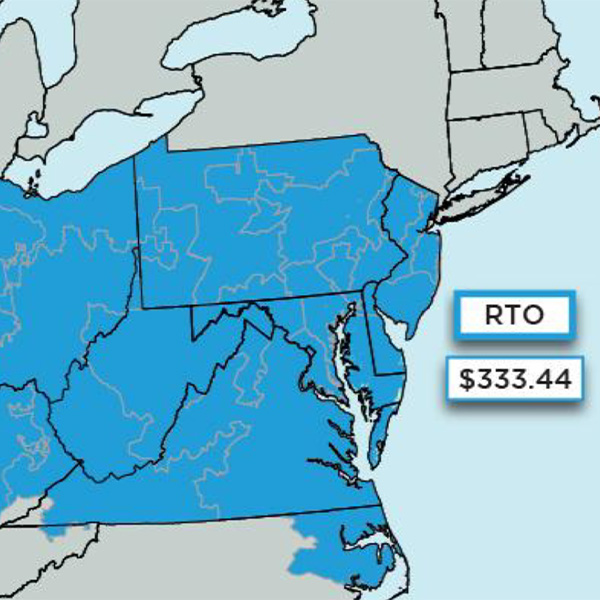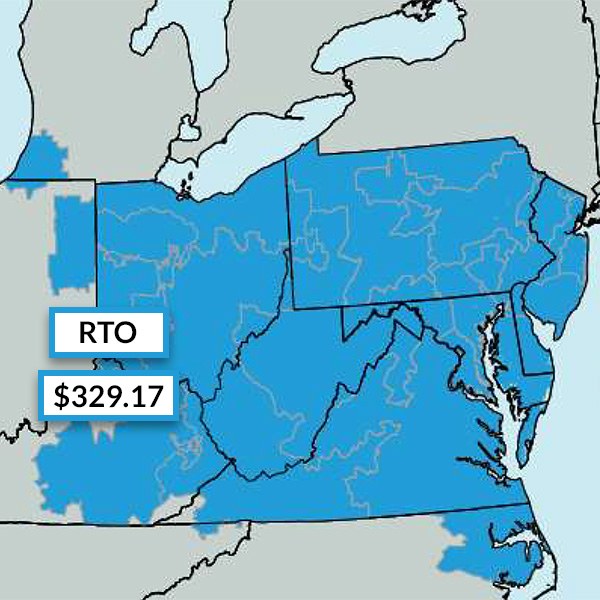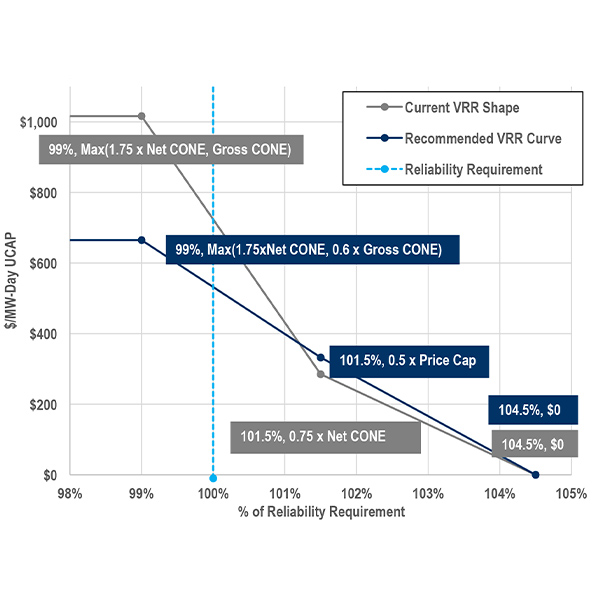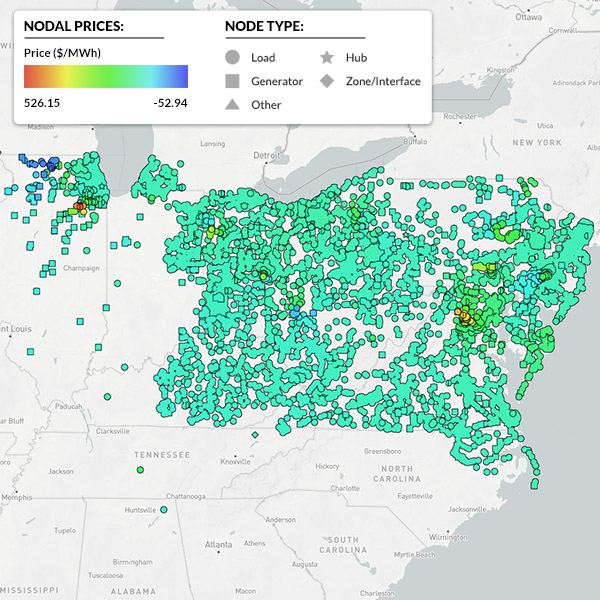Reliability Pricing Model (RPM)
PJM’s 2027/28 Base Residual Auction procured 134,479 MW in unforced capacity at the $333.44/MW-day maximum price, falling 6,623 MW short of the reliability requirement and setting a clearing price record.
The PJM Planning Committee has endorsed manual revisions to reflect how distributed energy resources would be accredited for participation in the 2028/29 Base Residual Auction.
PJM stakeholders are to vote on a record-breaking number of proposals on how the RTO should integrate large loads without impacting resource adequacy.
PJM has withdrawn its non-capacity backed load proposal, shifting the focus of its solution for rising large load additions to creating a parallel resource interconnection queue and reworking price-responsive demand.
PJM revised elements of its proposal to create a non-capacity backed load product for large loads as the Critical Issue Fast Path embarks on determining how to address the reliability challenges posed by accelerating data center load growth.
The Markets and Reliability Committee rejected three proposals to revise aspects of PJM’s effective load-carrying capability accreditation model.
The PJM MRC endorsed an issue charge to hire a consultant to investigate the pros and cons of a sub-annual capacity market and what designs stakeholders feel would be feasible.
The clearing price is the highest in PJM history and an increase of $59.22 (22%) from last year’s record for the RTO.
Key challenges in the review are tightening supply and demand, the uncertain cost of new capacity and accounting for changes PJM has made to how it identifies reliability risks and determines the capacity value for different resource types.
Anger over a recent dramatic rate hike and fears of energy shortfalls because of a predicted future rise in demand have prompted New Jersey to look anew at whether the state should consider pulling out of PJM.
Want more? Advanced Search









